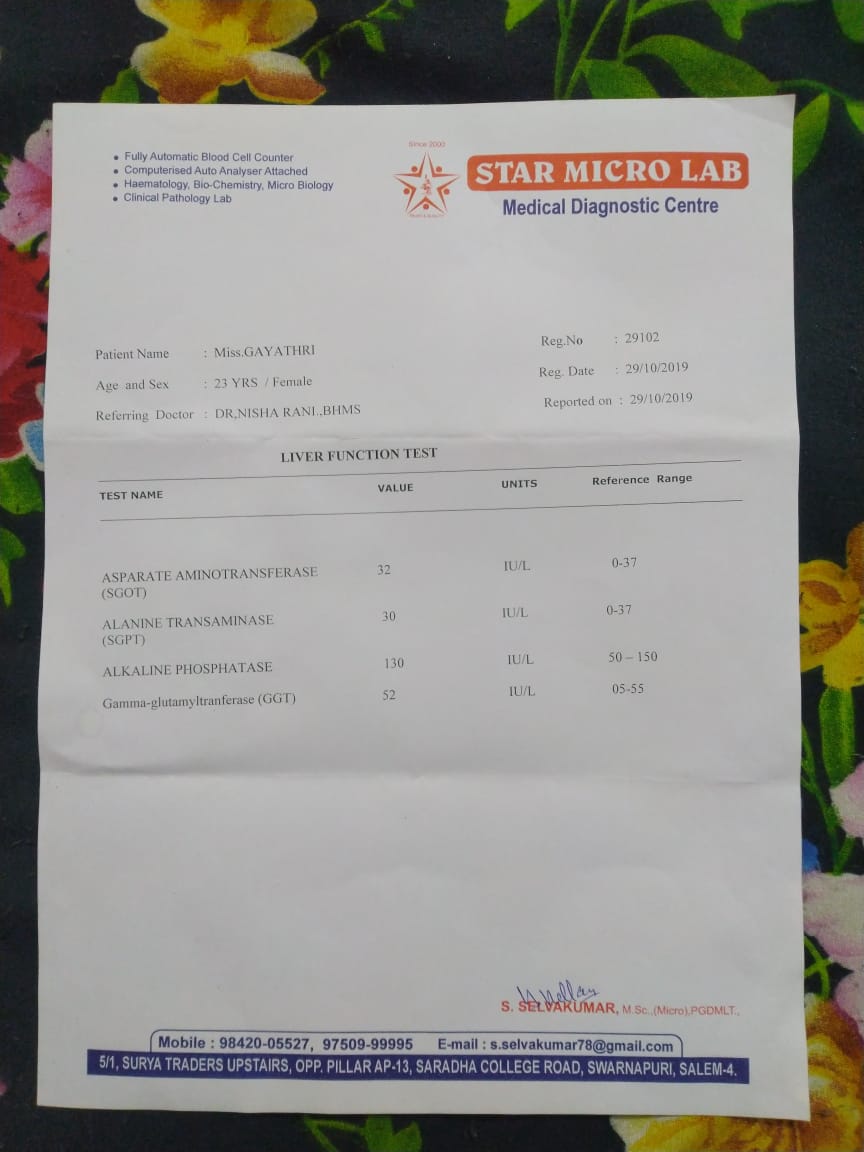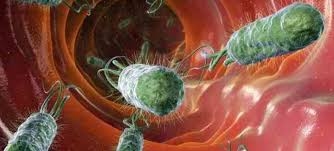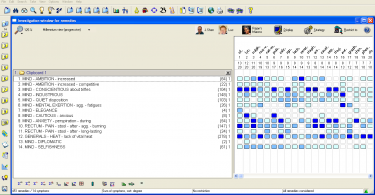
Abstract
During the past century, dramatic modifications in lifestyle have radically changed the health priorities in most areas of the world, owing to a growing incidence of non-communicable disease. Urbanization and associated changes, such as sedentary life style and fat rich diet, and a higher inherited tendency for diabetes mellitus makes Indians more prone to metabolic syndrome or insulin resistance and its manifestation, such as NAFLD and NASH. Let’s see a case of NAFLD with obesity treated with homoeopathic medicine.
Keywords: Life style disorder, non- alcoholic fatty liver disease, obesity, homoeopathic medicine.
Abbreviations: Non-alcoholic fatty liver disease (NAFLD), non-alcoholic steatohepatitis (NASH), body mass index (BMI), waist-to-hip ratio (WHR), waist circumference (WC), left ventricle dysfunction (LV dysfunction), hepatocellular carcinoma (HCC), chronic kidney disease (CKD), cardiovascular disease (CVD), type 2 diabetes mellitus (T2DM), body mass index (BMI).
Introduction
Not restricted to adults alone, lifestyles have started hitting kids as well. The shift in purchasing power and the advent of technology has changed the way in which our lives now function. Less physical activity, more resource availability and no time to spare have made humans become preys to some extremely rare diseases that the ancestors had never even heard of back in the 1960s and 1970s. (1)
While the infectious diseases such as malaria, cholera, polio can be managed with proper treatment, lifestyle diseases can be prevented if a healthy active lifestyle is followed. Between the ages of 30-69 worldwide,14.2 people die prematurely each year from diseases such as heart attacks, diabetes, and high blood pressure. Some of those diseases are shaving become more fatal than genetic or infectious diseases. (1)
Obesity
Obesity is a chronic and increasingly common disease globally characterized by excess body fat. (2)
Presently, there are three commonly used objective methods of estimating obesity in clinical practice: (i) body mass index (BMI), (ii) waist-to-hip ratio (WHR), and waist circumference (WC) and (iii) fat distribution. Obesity is steeply increasing in India. Primary reasons are imbalanced foods and physical inactivity. (2)
Correlation of NAFLD with obesity
There is a strong correlation between NAFLD prevalence and established obesity indices. The prevalence of NAFLD, pooled for Asian countries, was estimated to be 27.4% (95% CI 23.3–31.9%). (3)
“Non-alcoholic fatty liver disease (NAFLD) is an umbrella term which includes the simple deposition of adipose tissue in the liver to more progressive steatosis with associated hepatitis, fibrosis, cirrhosis, and in some cases hepatocellular carcinoma (HCC) (4). NAFLD is histologically further classified into non –alcoholic liver (NAFL) and non-alcoholic steatohepatitis (NASH). NAFL is characterized as the existence of liver steatosis without any evidence of hepatocellular injury in the form of ballooning of the hepatocytes. NASH is described as hepatic steatosis and inflammation with hepatocytes injury (ballooning) with or without fibrosis. (5)
There is a firm evidence that NAFLD is an important risk factor for T2DM and there is increasing evidence that NAFLD not only contributes to the development and progression of CVD but also to cardiac diseases (for example, LV dysfunction and hypertrophy, AF and heart valve calcification) and CKD. Further research is needed to understand the biological mechanisms by which NAFLD influences risk of HCC and these extra-hepatic diseases not least to establish whether there are key ‘common threads’ (for example, insulin resistance and activation of inflammatory pathways) that link NAFLD to the development of extra-hepatic diseases. (6)
Case study
A female aged 22 years old came to op, she is a known case of NAFLD with obesity.
Presenting complaints
Obesity for 5 years, and NAFLD with 3 years. Asymptomatic in clinical presentation.
Family history
Father – renal calculi, diabetes mellitus
Mother- hyperlipidaemia
Grandmother- hypertension
Physical generals: appearance fair complexion, obese
Appetite –decreased, thirst- increased, desire for egg++, aversion/ intolerance to milk, sweat- profuse(generalised) and offensive+, stool and urine – regular.
Mental generals- Worried about obesity, anxiety about health, memory – good.
General examination: Height: 164 cm, weight: 95kg BMI: 35.3
Anemia: mild pallor
Gastrointestinal system examination:
Inspection: No visible pulsation, no visible swelling, no discolouration, no dilated veins.
Palpation: No palpable swelling, no organomegaly, no fluid thrill, no tenderness, no local warmth.
Percussion: Normal tympanic sound heard with normal liver dullness.
Auscultation: Normal peristaltic sound heard.
Analysis and evaluation of symptoms
| Mental generals | Physical generals | Particulars |
| Worried/anxious about health++ (psora) (7) | Profuse, offensive sweat+++ (syphilis)(7) Increased thirst+ Desire – egg ++ Aversion –milk (psora )++(7) | Obesity ++(sycosis) (7) Non- alcoholic fatty liver disease.(sycotic)(7) |
Miasmatic analysis
Fundamental miasm: sycotic; Dominant miasm: psora-sycotic
Selection of symptoms for repertorisation:
Anxiety about health
Perspiration – profuse, offensive
Obesity
Fatty liver
Increased thirst
Aversion to milk
Desire for milk
Repertorial result (8)

Calcarea carbonicum 15/6/
Phosphorus 13/6
Silicea terra 13/6
PRESCRIPTION on 24-10-2018 1. Calcarea carbonicum 200/1 dose
2. Rubrum metallicum (2-2-2)/14 days
Selection of remedy: the medicine covered the following rubrics: anxiety about health, obesity, perspiration profuse, stomach increased, aversion to milk, desire egg. (8); and Calcarea carbonicum also covers the cirrhotic conditions of the liver (9), it’s a good liver remedy.)
Selection of potency: Calcarea carbonica acts well in higher potencies and in infrequent dose. (9)
General management: Advise for physical exercise and yoga to reduce weight (10)
Avoid carbohydrate and fat rich food (11)
Advise to take vitamin E rich food (12)
Follow up
| Date | Symptoms | Prescription |
| 15.11.2018 | Weight -95kg | Rubrum metallicum (2-2-2)/14 days |
| 4-2-2019 | Sweat profuse and offensiveness better than before. Generals – good Weight -92 kg | 1. Calcarea carbonicum 200/1 Dose. (every well-chosen remedy should be repeated at suitable intervals [§ 246], every correctly chosen homoeopathic medicine, even those whose action is of long duration, may be repeated daily for months with ever increasing success. [ § 248] (13)) 2. Rubrum metallicum (2-2-2)/14 days |
| 30.6.2019 | No offensiveness of sweat Weight – 89 kg | Rubrum metallicum (2-2-2)/14 days |
| 16.10.19 | Weight – 88 kg Generals – good | Rubrum metallicum (2-2-2)/14 days |
Ultrasonography (whole abdomen)
Before treatment

After treatment

Liver function test
Before treatment

After treatment

Conclusion
Homoeopathy is a complete medical science which has a clear-cut advantage over other systems of medicine. It considers the entire individual, his psychological and physical make-up as well as the complete evolution of the disease while prescribing a remedy. It is also key thing for us to recognize that each person may show a tendency towards certain pathology but may never develop such pathology or one can say that he/she is not sick unless they present such symptomatology. Yet the remedy can be detected from his mental-emotional setup plus a few prodromal physical symptoms, which are covered by the remedy. In such a case, one can again think about a constitutional remedy. So, a constitutional remedy is one that will actually prevent the pathology from presenting and remove the existing pathology. (14)
Thus, the constitutional homoeopathic medicine significantly delays as well as clears the lifestyle disorders.
References
1. Pinto RT; 11 Lifestyle Diseases You Should Take Seriously, Times of India, Sep 16, 2012.
- Munjal Y; API text book of medicine ;9th edition; vol I; Mumbai, Jaypee Medical Publishers ,2012; 885,886p
- Fan JG, Kim SU, Wong VWS; New trends on obesity and NAFLD in Asia, Journal of Hepatology 2017 vol. 67,doi 10.1016/j.jhep.2017.06.003.,863p
- Benedict M, Zhang Xuchen, non- alcoholic fatty liver disease: an expanded review, World Journal of Hepatology, volume 9, 2017, DOI:10.4254/wjh.v9.il6.715, 716sp.
- Chalasani N, Younossi Z, Lavine J, Diehl MA, Burnt M E, Cusi K, Charlton M, Sanyal AJ; The diagnosis and management of Non-alcoholic fatty liver disease: practice guideline by the American association for the study of liver disease, American college of gastroenterology, and the American gastroenterology association; The American Journal of Gastroenterology, 2012; doi:10.1038/ajg.2012.128, 811p.
- Byrne CD, Targher G, NAFLD: A multisystem disease, Journal of Hepatology 2015 vol. 62, 54p.
- Choudhary H. Indications of Miasm, 2nd edition, 2005, B. Jain Publishers, New Delhi; 19,22,60,88p.
- Schroyens F; Synthesis Repertorium Homoeopathicum Syntheticum;9.1ed, New Delhi, B. Jain Publishers(p)Ltd,2004
- Boericke W, Boericke’s Manual of homeopathic Materia Medica with repertory,
26th impression, New Delhi, B Jain publishers (p) ltd, 2010.
- Chalasani N, Younossi Z, Lavine JE, Charlton M, Cusi K, Rinella M, Harrison SA, Brunt EM, Sanyal AJ; The Diagnosis and Management of Non-alcoholic Fatty Liver Disease: Practice Guidance From the American Association for the Study of Liver Diseases; Hepatology; vol 67, 2018, DOI 10.1002/hep.29367;332p
- Jafari S, Hajinasrollah E, Foroughi M, Non-alcoholic fatty liver disease and Nutrition: A literature review, Advances in food Technology and Nutritional Sciences, Volume 2, 2016, DOI: 10.17140/AFTNSOJ-2-130, 51,53,54,55 p.
- Perumpail BJ et al, Role of vitamin E in nafld journal, Diseases 2018, doi: 10.3390/diseases6040086, 2,6p.
- Hahnemann S, Organon of Medicine,5th &6th edition combined, 25th impression, New Delhi, B. Jain publishers (p) ltd, 2009
- Vithoulkas G, The Questions Of The Constitutional Remedy; British Homoeopathic Journal, Vol 87, Issue 3, July1998, 146p.
About the authors
- Dr S. Sabari Rajan, M.D. (Hom)
(Professor, PG Guide and HOD, Department of Practice Of Medicine, Vinayaka Mission’s Homoeopathic Medical College & Hospital, Salem. (A Constituent College of Vinayaka Mission’s Research Foundation Deemed to be University Salem, Tamil Nadu).
- Dr C.T. Nisha Rani BHMS, MD(Hom)
PG scholar, Part II, Dept. of practice of medicine, Vinayaka Mission’s Homoeopathic Medical College & Hospital, Salem). A Constituent College of Vinayaka Mission’s Research Foundation Deemed to be University Salem, Tamil Nadu).





